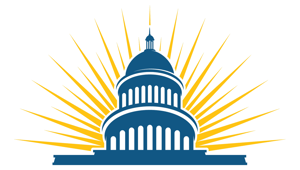
Communicating COVID-19 Legislation
In the past few weeks, lawmakers passed 2 new bills to help Americans and businesses weather the health and economic impacts of the COVID-19 virus. This legislation includes:
- The Families First Coronavirus Response (Families First) Act, which focuses a lot on leave
- The Coronavirus Aid, Relief, and Economic Security (CARES) Act, which has health and retirement plan implications
These bills have led to many questions for employees who are wondering, “How does this apply to me?” Let’s dive into what you can say about these new laws and what else you should include when communicating these changes to your population.
How these bills affect benefits and what to tell your people now
Health plans can’t charge employees and their families for COVID-19 tests or test-related services and vaccines.
This is a big one. One of the top reasons people avoid tests and preventive care—cost. For your people and their dependent family members, cost-free tests and office visits for the evaluation or test administration are one less worry. And this rule applies to high-deductible health plans (HDHPs), too. They can now cover testing and test-related office visits for COVID-19 before the deductible is met.
- What to say to your people: You will not have to pay for COVID-19 testing, test-related office visits, and vaccines.
- What to include when you communicate: Access to preventive care and COVID-19 tests; how to safely make an office visit; vaccines will be free of charge
Telehealth can be subsidized, or free, without impacting HSA eligibility.
Although telehealth has been around for a while now, HDHP participants had to pay for the convenience of health care from the comfort of their homes. Previous legislation viewed remote care, including telehealth, as other coverage, which made HSA-eligibility an issue. That hurdle has now been removed. Keeping those who are ill or at high risk for COVID-19 away from doctors’ offices and urgent care clinics is a priority in preventing the rapid spread of the virus. This is a temporary change only—it lasts through plan years beginning before December 31, 2021. And, while it’s not yet a permanent change, the data collected during this period may help plan providers make the case that this change is positive and less expensive than anticipated.
- What to say to your people: Telehealth will be covered by all health plans, including HDHPs. So, you can now use telehealth as your first point of contact.
- What to include when you communicate: How to access telehealth through health care vendors, and how to contact primary care providers, many of whom have recently added telehealth
Over-the-counter drugs and menstrual care products are now FSA-, HRA-, and HSA-eligible.
Employers can amend their plan documents to allow participants to use their flexible spending account (FSA), health reimbursement account (HRA), or health savings account (HSA) dollars to purchase over-the-counter drugs without a prescription. This change is voluntary for employers, so you should talk to your health plan consultant about whether it makes sense for your plan. And menstrual care products have been redefined as qualified medical expenses. With participants being able to use their spending and savings accounts to pay for these everyday items, it’s a good time to remind your people how these accounts work and what other eligible expenses they can pay for with their account dollars.
- What to say to your people: You can now use the money in your FSA, HRA, or HSA to pay for additional items, including over-the-counter drugs and menstrual care products.
- What to include when you communicate: Account rules, deadlines, and how to increase contributions
Contribute up to $5,250 toward an employee’s student loans, tax-free.
Even under normal circumstances, American workers have been struggling with student debt. Under the CARES Act, those with federal student loans are getting some relief. Student loan borrowers are able to push pause on their monthly payments, with no penalties or interest, through September 30, 2020. And employers can contribute up to $5,250 tax-free toward their employees’ student loans through January 1, 2021 (applies to payments made after the date of enactment).
- What to say to your people: You can now put a temporary hold on repayment of your federal student loans.
- What to include when you communicate: Student loan refinancing benefits or employer tax-free contributions made toward an employee’s student loan debt, financial counseling, and financial well-being information
HSA and IRA contributions can be made retroactively as the 2019 deadline has been extended.
The IRS has decided to extend the 2019 tax-year deadline for contributions. Employees have until July 15, 2020, to make 2019 contributions to their HSA and IRA accounts.
- What to say to your people: You can reduce your tax burden by continuing to contribute to your 2019 HSA and IRA.
- What to include when you communicate: How the HSA triple tax advantage works, why saving for retirement is always a good idea, and how HSAs can be used as long-term savings vehicles
The 10% tax on early distributions from defined contribution plan accounts has been waived, and loan limits for both defined benefit (DB) and defined contribution (DC) plans have increased to $100,000.
If your people experience economic hardship during the coronavirus pandemic, these new rules provide a lifeline. Specifically, the CARES Act has made it easier for participants to access savings in their retirement plans if they’ve been impacted by the coronavirus. Those affected will not be subject to the additional 10% early withdrawal tax penalty if they need to access the funds in their accounts. Loan limits have doubled but are limited to the lesser of $100,000 or 100% of a participant’s vested balance. Participants have 3 years to repay in-service distributions and 3 years to repay any income tax on a plan loan default.
- What to say to your people: If you’re facing a hardship due to the coronavirus pandemic, you have options. The CARES Act has increased the DB and DC loan limits and eliminated the additional early withdrawal tax.
- What to include when you communicate: Long-term financial implications of taking a DC or DB loan and information on financial well-being benefits, including any benefits that may offer relief to those hit hard by the COVID-19 pandemic
Required minimum distributions for defined contribution plans and IRAs are temporarily waived.
To help retirees avoid selling stocks at market lows, the CARES Act allows participants in defined contribution plans to defer required minimum distributions (RMDs). Although the SECURE Act raised the age for RMDs to 72, RMDs would have otherwise still needed to be paid by April for those who turned 70½ last year.
- What to say to your people: Required minimum distribution rules have been relaxed. You don’t need to withdraw savings from your retirement accounts in 2020. Any required beginning date distributions that went out on or before April will not be considered required minimum distributions under the law. It appears that they generally will be eligible for rollover.
- What to include when you communicate: How to plan ahead for distributions and maximize retirement income
Do you employ fewer than 500 employees?
If so, you have even more to share with your people from the Families First Act. While key provisions apply to employers with fewer than 500 employees, these topics are in the news regularly, and employees everywhere have questions. Use this opportunity to remind your people how your leave and time-off programs work.
Employees have paid family and medical leave options for COVID-19 care and related closures.
If caregiving services or school is suspended due to virus-related closures, your people may qualify for leave. The Emergency Family and Medical Leave Expansion Act (EFMLEA), effective through December 31, 2020, ensures that employers allow employees to take up to 12 weeks of leave if they’re unable to work (or telework) due to caretaking responsibilities during a public health emergency, in this case, COVID-19.
This extends to micro employers, or companies with less than 50 employees (unless they meet certain exemption criteria). Employers this size don’t need to participate if doing so would jeopardize the business, but to encourage participation, employers who continue to meet payroll and debt obligations during this public health emergency can receive qualified Payroll Protection Program (PPP) loans that may be forgiven.
- What to say to your people: If you’re unable to work because you need to take care of a family member who has COVID-19, you’re eligible for up to 12 weeks of paid leave through the Emergency Family and Medical Leave Expansion Act (EFMLEA).
- What to include when you communicate: Be clear about any paid leave benefits, including short- and long-term disability, how much time your people can take, how these benefits can be used, and how much they’ll get paid during that time.
Employees under government-mandated quarantine or who may have COVID-19 may qualify for paid sick leave.
The Emergency Paid Sick Leave Act, also effective through December 31, 2020, requires 2 weeks of paid sick time if an employee is unable to work (or telework) for any of the following reasons:
- A state, federal, or local quarantine or isolation order related to COVID-19 has been issued.
- A health care provider told the employee to self-quarantine.
- The employee is experiencing symptoms of COVID-19 and seeking a medical diagnosis.
- The employee is caring for an individual who is quarantined or self-quarantined, caring for children because schools or day care centers are closed, or a child care provider is unavailable due to COVID-19.
Employers must pay sick leave for full-time employees at 100% of regular pay for up to 80 hours. Part-time employees are also entitled to paid leave equal to the number of hours worked on average over a 2-week period. This benefit is available immediately, regardless of time served. It is capped at a maximum of $511 per day—$200 per day if the leave is for caregiver responsibilities.
- What to say to your people: If you or a family member are subject to a quarantine order or are sick from COVID-19, you’re eligible for 2 weeks paid sick leave at 100% of your regular pay, up to 80 hours. Part-time employees are also eligible for paid sick leave.
- What to include when you communicate: Information on the Family Medical Leave Act (FMLA), short-term disability (STD), and long-term disability (LTD) benefits, and what to expect when applying for, taking, and returning to work from leave
For more information about how to communicate about the COVID-19 pandemic, visit our coronavirus resource library. For deeper insight into the virus’s impact on employee benefits, including plan design, compliance, potential health plan costs, investment implications, and more, explore Segal’s COVID-19 resource page.

Cassandra Roth, Senior Communications Consultant, is an award-winning innovator in using augmented reality for employee engagement and in developing results-driven campaigns.
